Recent studies on the use of cold plasma for water treatment in agriculture have demonstrated its disinfection and oxygenation capabilities, with high degradation of common plant pathogens.
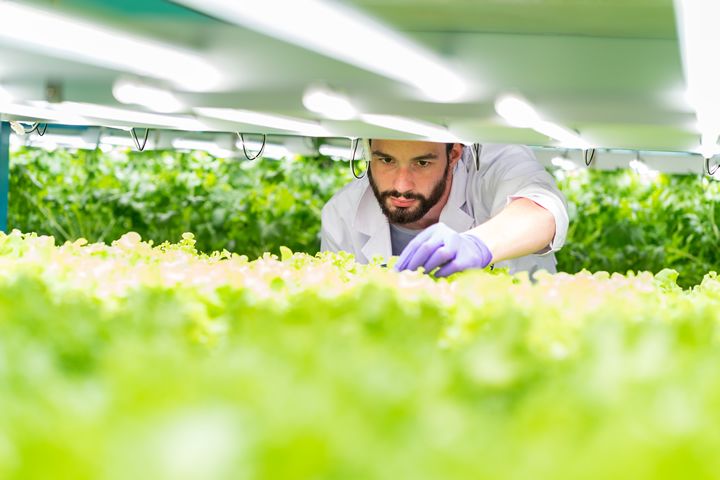 Plasma-activated water: A promising technology for pathogen mitigation?
Plasma-activated water: A promising technology for pathogen mitigation?

Article from | Ingersoll Rand
Plant Pathogen Disinfection with Plasma-Activated Water
Cold Plasma applications have been extensively researched and developed over the past decade to enhance agriculture production and yields as a critical step in meeting the increasing food demands of the global population. Plasma-activated water (PAW) holds a significant position in these research efforts, particularly in the development of microbe inactivation applications, owing to its high Reactive Oxygen Species (ROS) content that enhance the Dissolved Oxygen (DO) levels in water. PAW has been shown to be a rich source of reactive oxygen and nitrogen species (RONS), including ozone, hydrogen peroxide, hydroxyl radicals, and superoxide anions, among others, which can deactivate microorganisms. The reactive species in PAW are primarily responsible for the inactivation of microorganisms, with their concentration and type influenced by the gas and liquid used to generate the plasma, the chemical environment, the excitation voltage, and the generation method. Among all the ROS generated in PAW, hydrogen peroxide (H2O2) is thought to be chiefly responsible for the Oxidation-Reduction Potential (ORP) levels, as it can act as both an oxidizing agent and a reducing agent. The higher the ORP value, the greater the oxidizing capability and antimicrobial property. Industry studies have shown that PAW can effectively inactivate aerobic bacteria, yeasts, and molds in fruits and vegetables. The optimal decontamination time for achieving sterilization depends on various factors: the type or species of microorganisms, the surrounding medium, the plasma’s power density, and the gas used to generate the plasma. Beyond its bactericidal activity, PAW is also effective in degrading pesticide and antibiotic residues in water and packaging materials.
Fungi in Agriculture
Fungi in agriculture are also a significant concern. It is documented that over 25 different fungal species infect stored grains and legumes among many other consumables, with Aspergillus and Penicillium genera causing most of the damage during storage and germination worldwide. Filamentous fungi are ubiquitous in nature and present a potential threat to humans and economically significant plant and animal species, as they can contaminate food at various stages of production under favorable temperature and humidity conditions. Species of the genus Fusarium, particularly their mycotoxins, are recognized as significant contaminants, posing a considerable challenge in grain and fruit production. Mycotoxins from Aspergillus flavus are known to be particularly harmful to humans, causing hemorrhaging and carcinogenesis. Even though fungi spores have been reported to be more resistant to PAW than vegetative bacteria, plasma-activated water has been shown to reduce or eliminate them. Studies have found that the incidence and severity of late blight, as well as the number of leaf infections, are significantly reduced in potatoes treated with PAW, compared to controls. The plant height, tuber number, and tuber yield were also increased, indicating that PAWs could be an effective fungicide alternative for controlling late blight and enhancing yield. Similarly, a separate study showed significant inhibition of spore microbial activity following PAW treatment, when assessing the viability and cellular responses of Fusarium graminearum under laboratory conditions.
About Ion Solutions
Ion Solutions, developed by Ingersoll Rand, is pioneering the use of cold plasma technology for water treatment in controlled environment agriculture (CEA). Cold plasma is a low-temperature ionized gas that effectively increases dissolved oxygen levels and introduces reactive oxygen species (ROS) into the water, offering a dual-mode disinfection process. These enhancements lead to healthier plant growth, disease control, and improved water quality without relying on synthetic chemicals. Ion Solutions' system is energy-efficient, boasts rapid treatment times, and includes advanced remote control capabilities for easy integration into existing setups.
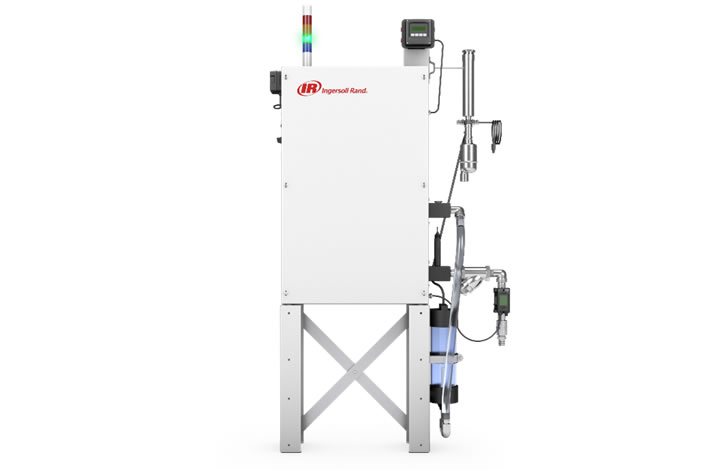
Ingersoll Rand’s Ion Solutions system.
Ion Solutions Plasma-Activated Water Results
To validate field studies, Ingersoll Rand conducted laboratory testing to assess the immediate impact of Ion Solutions PAW exposure on pathogens. Fusarium oxysporum and Pythium irregulare, two of the most prevalent and detrimental pathogens in CEA, were studied over varying durations (20 seconds, 60 seconds, and 2 minutes respectively). These studies not only confirmed the disinfectant properties of the technology but also demonstrated the rapid effectiveness of IRIS PAW in inactivating or eliminating these fungi. For Fusarium, the results indicated a 5-log reduction, eliminating 99.999% of the spores within both exposure periods (Table 1). Similarly, for Pythium, a 5.4-log reduction was observed, eradicating 99.9994% of the spores in both time frames as well (Table 2). In a separate study, IRIS PAW obliterated E. coli, resulting in a 5.57 log reduction within 30 seconds (Table 3). This research further substantiates Ion Solutions Plasma-Activated Water as an effective and energy efficient, chemical-free disinfection alternative for the CEA market.
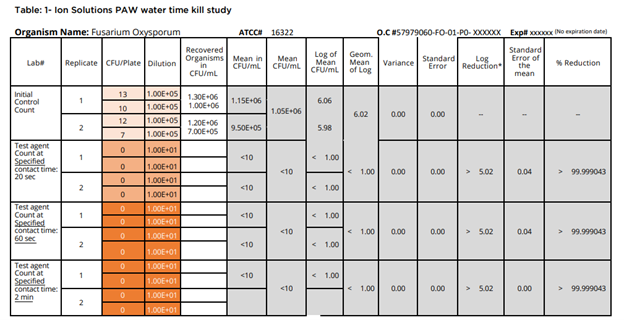
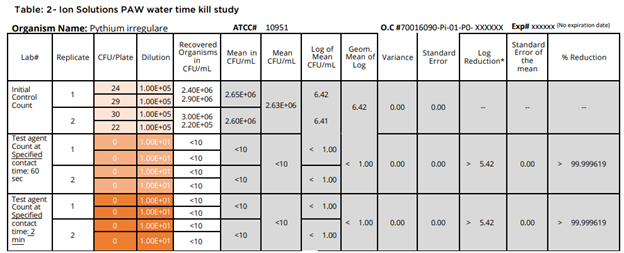
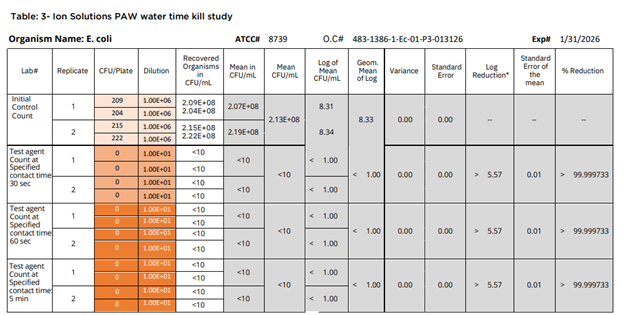
Those looking for more information about cold plasma use in CEA can download the complimentary eBook “Unlock the Potential of Cold Plasma for Oxygenating and Disinfecting Water”.
Ion Solutions is now available for purchase.
Contact Ingersoll Rand to learn more about their innovative Ion Solutions technology!
The content & opinions in this article are the author’s and do not necessarily represent the views of AgriTechTomorrow
Comments (0)
This post does not have any comments. Be the first to leave a comment below.
Featured Product

